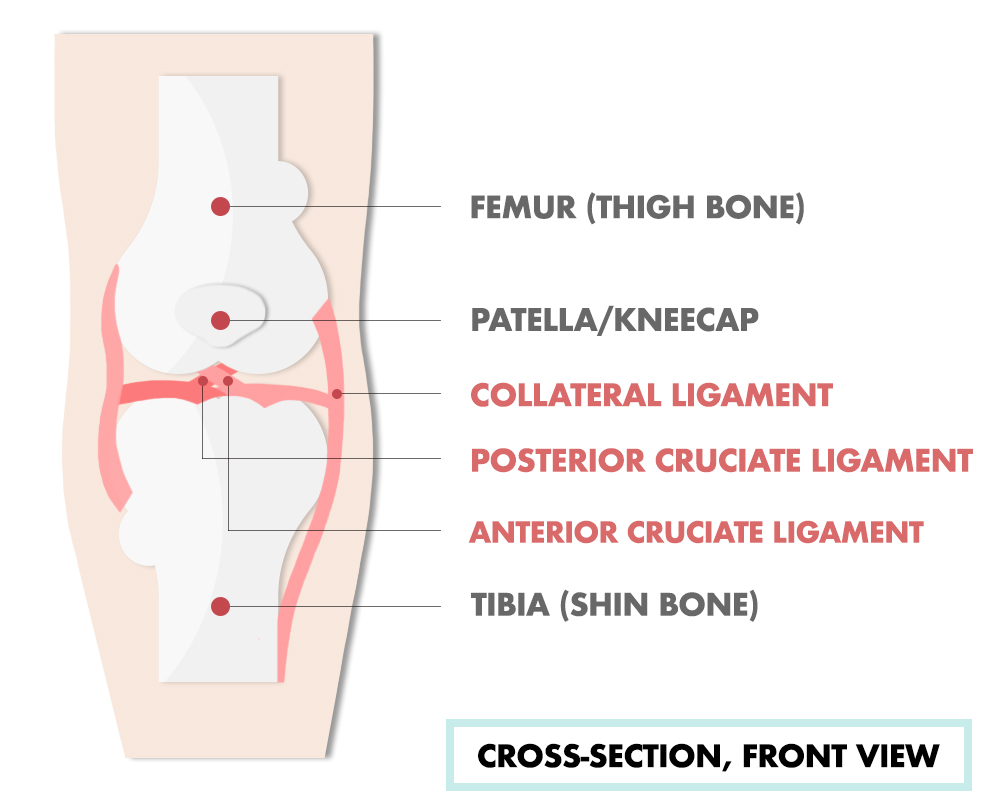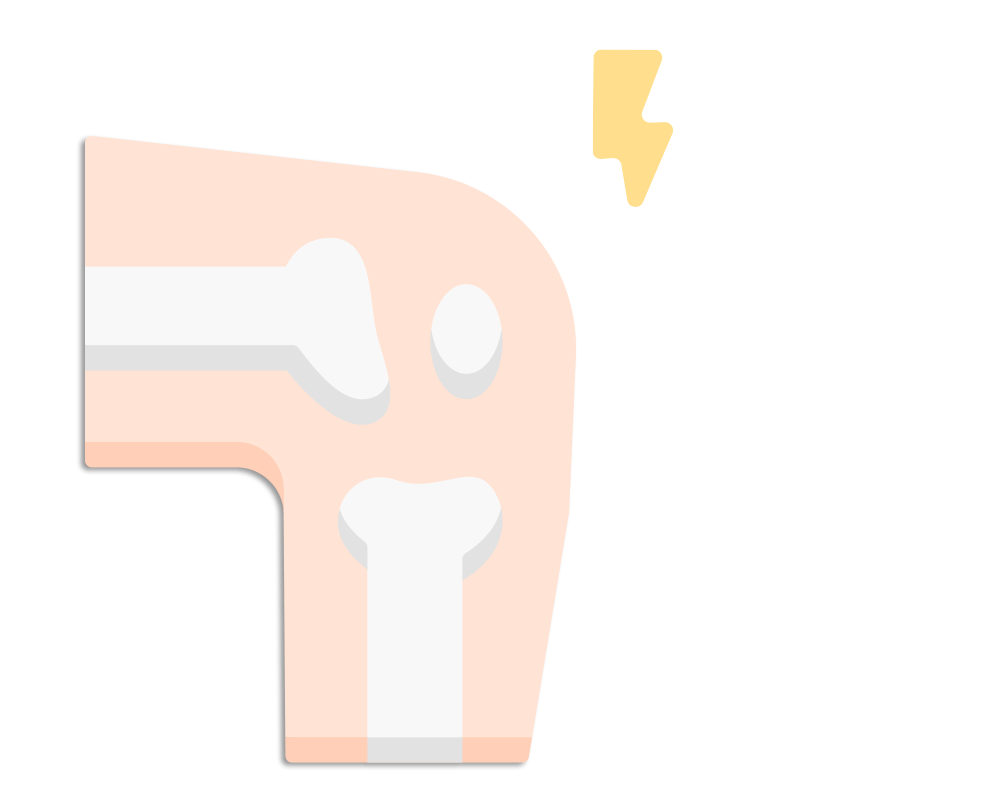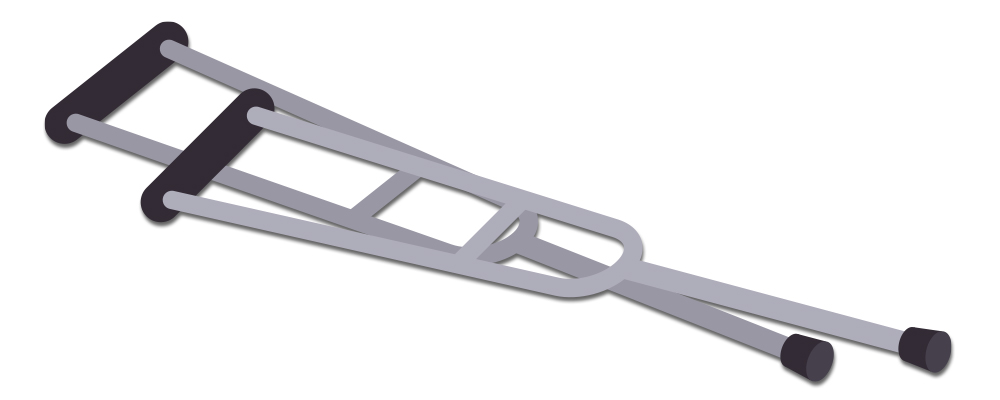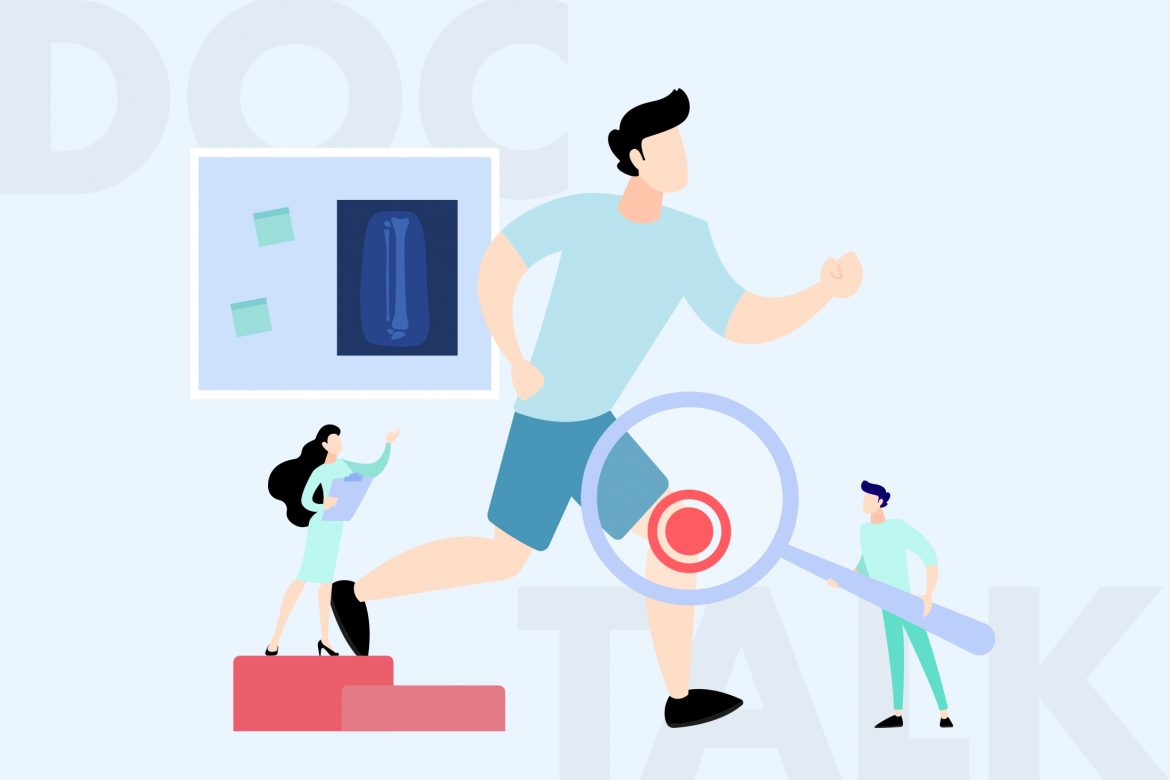What’s really causing your knee pain? Senior Consultant Orthopaedic Surgeon Dr Andrew Dutton explains.
If you clicked on this article, you probably know how annoying knee aches and pain can be. The largest joints in your body, your knees bear much weight and stress from everyday activities – more so if your job or exercise routine involves lots of running, jumping and squatting. As the knee comprises many parts, the location of your discomfort may offer a clue to the underlying problem, but ultimately, a thorough clinical examination and some imaging scans may be needed for a firm diagnosis.
Knowing your knees
To understand what’s causing your knee pain, it helps to know the different parts that make up your knee. The knee joint is where your thigh bone (femur) and shin bone (tibia) make contact and move in relation to each other. There is also a bone at the front called the patella or kneecap.

The quadriceps muscles are at the front of the thigh bone, while the hamstring and calf muscles are located behind the thigh and shin bones. Tendons connect the leg muscles to the bones.
The knee joint is held together by 4 main ligaments: the ACL (anterior cruciate ligament) and PCL (posterior cruciate ligament) in the centre, and 2 on the sides called the collateral ligaments.
The ends of the bones are covered with cartilage which ensures there is smooth movement. There are also 2 c-shaped menisci, which are fibrous cartilage structures that act as cushions between the bones.
Possible causes

According to Dr Andrew Dutton, a senior consultant orthopaedic surgeon, the most common causes of knee pain are cartilage damage, meniscus tears, patellar tendonitis, ligament tears such as ACL or MCL ruptures, and stress fractures.
Pain at the front of your knee
People who jog, do squats or repetitive jumping are most at risk of encountering knee pain. Pain at the front of the knee is often due to overuse-type injury, where there is increased loading of the kneecap on the thigh bone. The pain can worsen if there are cartilage wear or fissures (tears).
A locking sensation
If your knee locks up as you stand or bend the knee, you might have sustained a meniscus tear. Besides swelling and stiffness, the pain in the knee joint may come and go, but it tends to intensify when you put pressure on the joint.
Pain below the kneecap
Another part of the knee that commonly becomes strained and sore is the patellar tendon, which is located between the kneecap and shin bone. The tendon works with the quadriceps muscles to straighten the knee. Repeated stress, such as from frequent jumping, can cause the tendon to become inflamed. With patellar tendonitis, you may feel the soreness behind the lower part of the kneecap.

A popping sound or weakness
If your knee twists during sports, makes a “pop” sound, and feels unstable or even buckles, it is likely that you sustained a ligament injury. The pain can be sharp, and you may feel instability or weakness. An ACL rupture causes instability or weakness of the knee, whereas the MCL rupture will usually hurt on the inside of the knee.
A deep, dull ache in the knee that has worsened
This may be a flag for a stress fracture or contusion (bruising) of a bone. Usually starting as a tiny hairline crack, a stress fracture often goes unnoticed in the early stages as the tenderness tends to subside with rest. People who engage in high-impact sports and those who recently changed their workout routine and/or training intensity are more prone to stress fractures as such bone injuries are typically caused by overuse or repetitive force.

Treatment
A course of anti-inflammatory medication may first be prescribed to reduce swelling and pain. Physiotherapy is often needed to condition the knee, regain full range of motion, relax and stretch the muscles, and re-train neuromuscular feedback. “It is important to prevent stiffness, muscle spasm and muscle atrophy which may contribute to further instability and other symptoms,” explains Dr Dutton.
Left untreated, injury to the different parts of the knee tends to worsen, and damage may become irreversible. Damaged cartilage, for instance, may continue to wear down.
In the case of meniscus tears, you may need surgery to repair or trim the tissue, depending on the severity and location of the tear. If a knee ligament is completely torn, surgery will involve replacing the torn ligament with a piece of healthy tendon. To help a stress fracture heal, you may need a walking brace or crutches, which can reduce the load on the bone.
 If cartilage injuries are not treated early on, then the wear and tear continues, leading to osteoarthritis. Osteoarthritis may cause knee deformity, pain, stiffness, and limping. In these cases, the definitive treatment would be resurfacing the knee with metal “crowns” or caps, says Dr Dutton. This procedure is termed total knee arthroplasty or replacement. It relieves pain, and patients can return to normal activities after recovery.
If cartilage injuries are not treated early on, then the wear and tear continues, leading to osteoarthritis. Osteoarthritis may cause knee deformity, pain, stiffness, and limping. In these cases, the definitive treatment would be resurfacing the knee with metal “crowns” or caps, says Dr Dutton. This procedure is termed total knee arthroplasty or replacement. It relieves pain, and patients can return to normal activities after recovery.
When to seek help

For those taking a wait-and-see approach, know that you should see a doctor for a proper assessment if the pain and/or swelling at your knee persists for 2 weeks, despite rest and stretching.
Delaying the visit is a definite no-no because after 6 weeks or so, knee injuries such as ligament tears may not heal in a proper manner and can cause long term laxity or instability, warns Dr Andrew Dutton. It’s also crucial when your knee hurts that you do not push through the pain nor continue with squats and jumping as this can aggravate matters.
Register or schedule an appointment with Dr. Andrew Dutton here.
More about Dr. Andrew Dutton:
Dr. Andrew Dutton
MB.BS.BSc (UNSW)(AUS), M.Med (NUS)(SG), FRCS (Edinburgh)(UK)
Orthopaedic Surgeon
Dr. Dutton has been in clinical practice since 1996 after graduating from Marist College, Canberra and the University of New South Wales, Sydney, Australia. Dr. Dutton has worked at the Prince of Wales Hospital, Sydney and the St. George Hospital, Sydney before completing his orthopaedic surgery training in Singapore.
He completed his subspecialty training and was on staff at the Massachusetts General Hospital and Harvard Medical School, Boston, USA. During this time he was trained in complex surgeries of the hip and knee, while caring for patients that came for treatment from all across the USA and the staff at Harvard University.
Dr Andrew Quoc Dutton Orthopaedic & Sports Clinic is at 3 Mt Elizabeth Medical Centre Level 12. Suite 12-10, Singapore (228510)
Register or schedule an appointment here.
Services:
Knee Replacement ⋅ Knee Pain Treatment ⋅ Ligament Reconstruction ⋅ Complex or Primary Revision (Redo) Knee Replacement ⋅ Cartilage Regeneration (Micro-fracture and Cartilage Transplantations) ⋅ Arthroscopy or Keyhole Surgery for Sports Injuries Knee (ACL and Meniscal Injuries) ⋅ Knee Osteoarthritis Treatment ⋅ Knee Arthroscopy ⋅ Meniscus Tear Treatment ⋅ Cartilage Injury Treatment ⋅ ACL Injury Treatment
This feature article is produced in consultation with Dr. Andrew Dutton from Dr Andrew Quoc Dutton Orthopaedic & Sports Clinic. Artwork by Curatedition, all rights reserved.
All content featured in Curatedition Health and Wellness articles is for informational purposes only and not intended to be a substitute for personalised professional medical advice, diagnosis, or treatment. If you think you have a medical emergency, call your doctor, qualified health service provider, or 995 immediately.
Related links:
DocTalk: Get the Smile You Want
DocTalk: 6 Signs You May Have a Sleep Problem
DocTalk: Kick Cancer in the Gut
DocTalk: How Too Much Screen Time and Blue Light Affect Your Eyes

